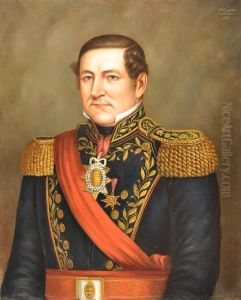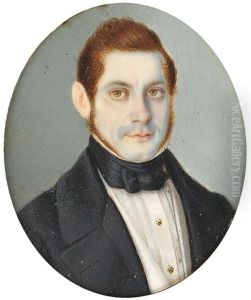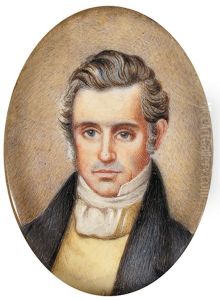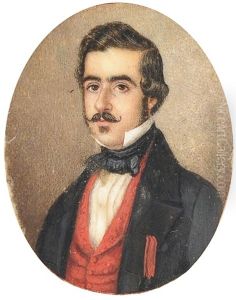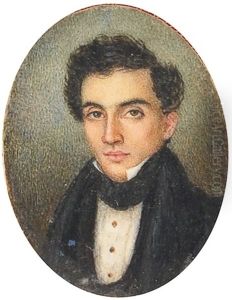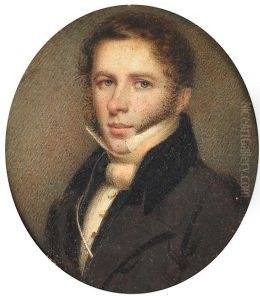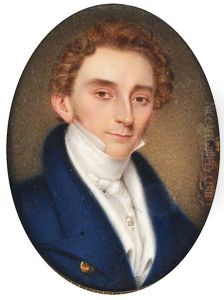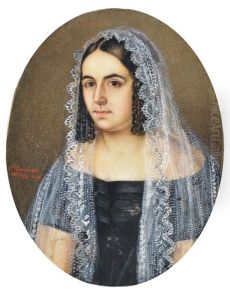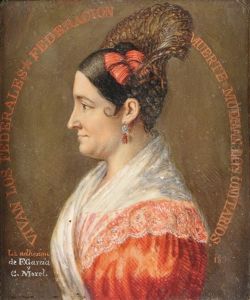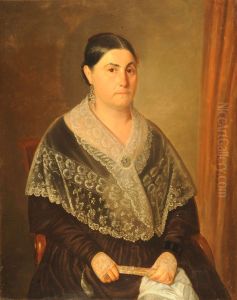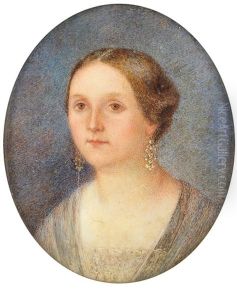Fernando Garcia Del Molino Paintings
Fernando García del Molino was a Chilean-born Argentine portrait painter, miniaturist, and lithographer who was active during the 19th century. Born in Santiago, Chile, in 1813, he moved to Buenos Aires, Argentina, at a young age where he would eventually develop his career and make significant contributions to the cultural and artistic landscape of the country.
García del Molino studied painting under the tutelage of the French artist Raymond Monvoisin, a prominent figure in the Chilean and Argentine art scenes of the time. Monvoisin's influence is evident in García del Molino's work, particularly in his approach to portraiture, which combined a refined technique with a keen eye for detail and a strong sense of realism.
During his career, García del Molino became well-known for his portraits of important political and social figures of his time, capturing the likenesses of presidents, military leaders, and members of the elite. His work not only served as a testament to his artistic skill but also provided a visual record of the individuals who played pivotal roles in the history and development of Argentina and, to an extent, South America.
In addition to his portraits, García del Molino worked in other genres and was skilled in creating miniatures – small, detailed portraits typically painted on ivory or paper. These intimate works were highly valued by patrons and collectors for their delicacy and precision. Furthermore, he explored the medium of lithography, contributing to the diffusion of visual culture through printed reproductions of his and others' artworks.
García del Molino's legacy is preserved in various cultural institutions, including the National Museum of Fine Arts in Buenos Aires, which houses several of his works. His contributions to the art world spanned several decades, and he remained an active and respected member of the artistic community until his death in 1899.
Throughout his life, he witnessed and artistically documented a period of significant change and development in South America, from the struggles for independence to the formation of national identities. His portraits not only reflect the aesthetic preferences of his era but also serve as historical documents, offering insights into the personal characteristics and fashions of the 19th-century South American elite.
